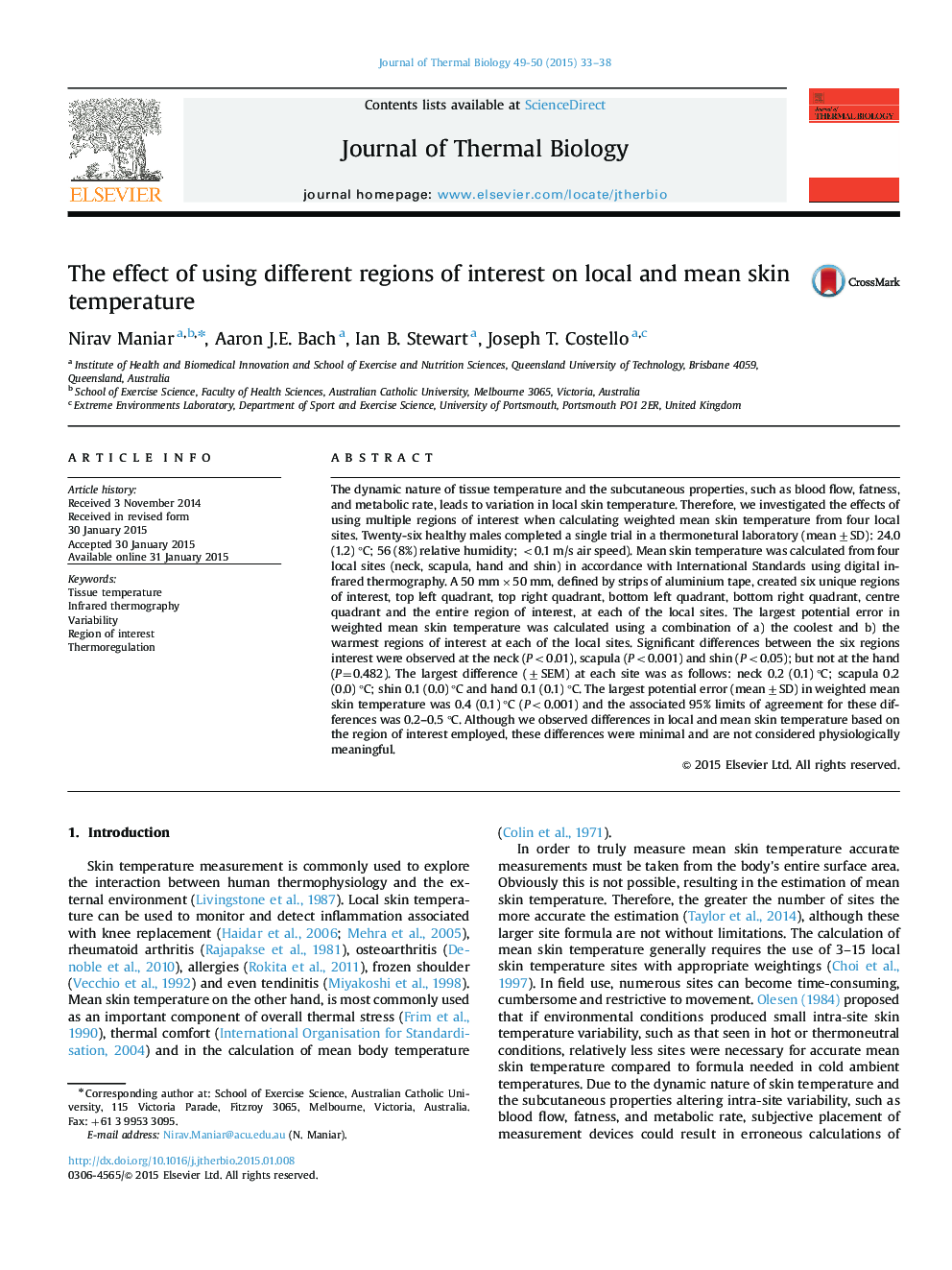| Article ID | Journal | Published Year | Pages | File Type |
|---|---|---|---|---|
| 2842755 | Journal of Thermal Biology | 2015 | 6 Pages |
•Local and mean skin temperature variability was assessed using six regions of interest.•Local skin temperature variability was statistically, but not clinically, different.•Mean skin temperature variability was not meaningful.•Skin temperature variability within regions is negligible in thermoneutral conditions.
The dynamic nature of tissue temperature and the subcutaneous properties, such as blood flow, fatness, and metabolic rate, leads to variation in local skin temperature. Therefore, we investigated the effects of using multiple regions of interest when calculating weighted mean skin temperature from four local sites. Twenty-six healthy males completed a single trial in a thermonetural laboratory (mean±SD): 24.0 (1.2) °C; 56 (8%) relative humidity; <0.1 m/s air speed). Mean skin temperature was calculated from four local sites (neck, scapula, hand and shin) in accordance with International Standards using digital infrared thermography. A 50 mm×50 mm, defined by strips of aluminium tape, created six unique regions of interest, top left quadrant, top right quadrant, bottom left quadrant, bottom right quadrant, centre quadrant and the entire region of interest, at each of the local sites. The largest potential error in weighted mean skin temperature was calculated using a combination of a) the coolest and b) the warmest regions of interest at each of the local sites. Significant differences between the six regions interest were observed at the neck (P<0.01), scapula (P<0.001) and shin (P<0.05); but not at the hand (P=0.482). The largest difference (±SEM) at each site was as follows: neck 0.2 (0.1) °C; scapula 0.2 (0.0) °C; shin 0.1 (0.0) °C and hand 0.1 (0.1) °C. The largest potential error (mean±SD) in weighted mean skin temperature was 0.4 (0.1) °C (P<0.001) and the associated 95% limits of agreement for these differences was 0.2–0.5 °C. Although we observed differences in local and mean skin temperature based on the region of interest employed, these differences were minimal and are not considered physiologically meaningful.
